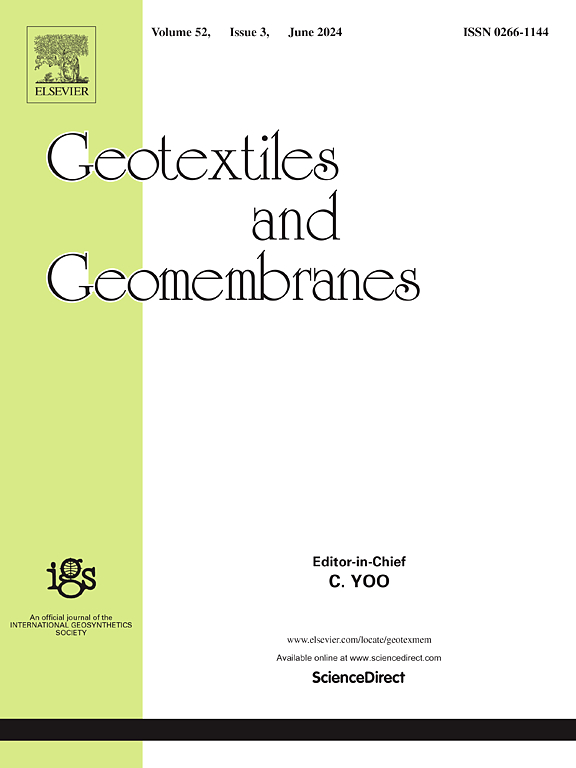整体式桥台后EPS土工泡沫的离心建模
IF 4.7
1区 工程技术
Q1 ENGINEERING, GEOLOGICAL
引用次数: 0
摘要
本研究探讨了土工合成可压缩包体用于改善整体桥梁性能的程度。采用土工离心机模型,模拟了在有和没有1.2 m厚EPS土工泡沫包体的基础上,作用于9 m基台的热运动。在120年的热循环设计寿命中,可压缩包体显著降低了桥台背后产生的土压力,而不会发生明显的永久变形。这导致桥面轴力和峰值桥台弯矩分别仅达到未加土工泡沫时的三分之一和三分之二。当采用可压缩包裹体时,充填体沉降略有增加,但紧靠桥台后的峰值沉降保持在100 mm左右。通过极值位移幅值的应用,发现EPS土工泡沫塑料的性能对永久变形不太敏感,永久变形集中在桥台上半部分后。通过提供部分隔离,而不是完全容纳热运动,这些结果表明,即使在遭受大的热运动时,EPS土工泡沫也可以改善整体桥梁性能。本文章由计算机程序翻译,如有差异,请以英文原文为准。
Centrifuge modelling of EPS geofoam behind integral bridge abutments
This research investigates the extent to which geosynthetic compressible inclusions can be used to improve the performance of integral bridges. Geotechnical centrifuge modelling was used to simulate thermal movements acting on a 9 m abutment on a spread foundation, with and without a 1.2 m thick EPS geofoam inclusion. The compressible inclusion was found to significantly reduce the earth pressures behind the abutment generated over a 120-year design life of thermal cycles without undergoing notable permanent deformation. This resulted in the bridge deck axial force and peak abutment bending moment reaching only a third and two-thirds, respectively, of the values without the geofoam. Backfill settlement increased slightly when the compressible inclusion was used, although the peak settlement immediately behind the abutment face remained similar at around 100 mm. Through the application of extreme displacement amplitudes, it was found that the performance of EPS geofoam was not overly sensitive to permanent deformation, which was concentrated behind the top half of the abutment. By providing partial isolation, rather than accommodating thermal movements in their entirety, these results suggest that EPS geofoam can improve integral bridge performance even when subjected to large thermal movements.
求助全文
通过发布文献求助,成功后即可免费获取论文全文。
去求助
来源期刊

Geotextiles and Geomembranes
地学-地球科学综合
CiteScore
9.50
自引率
21.20%
发文量
111
审稿时长
59 days
期刊介绍:
The range of products and their applications has expanded rapidly over the last decade with geotextiles and geomembranes being specified world wide. This rapid growth is paralleled by a virtual explosion of technology. Current reference books and even manufacturers' sponsored publications tend to date very quickly and the need for a vehicle to bring together and discuss the growing body of technology now available has become evident.
Geotextiles and Geomembranes fills this need and provides a forum for the dissemination of information amongst research workers, designers, users and manufacturers. By providing a growing fund of information the journal increases general awareness, prompts further research and assists in the establishment of international codes and regulations.
 求助内容:
求助内容: 应助结果提醒方式:
应助结果提醒方式:


